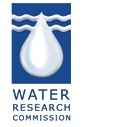Workshop 5 (October 29-30, 2012):
Participating Organizations:
Hydrogeodesy Tutorial (4 hours, day and time to be determined):
|
|

|
IGCP 565 Workshop 5: Water Security for Africa: Bringing Together Research, Monitoring, and ManagingOctober 29-30, 2012 |

 |  |
Hydroseismicity and (hydro)geodetic monitoring for Southern African water and energy development
Chris Hartnady
Umvoto Africa (Pty) Ltd, Muizenberg, South Africa
Hydroseismicity refers generally to earthquakes triggered by fluid-pressure changes in a poro-elastic crust. Introduced to explain some intraplate earthquakes, the concept is based upon the spatial correlation between: 1) crustal volumes of high seismicity (e.g., the New Madrid zone, USA); 2) large gravity-driven river basins that can provide adequate supply of water to upper- and mid-crust; and 3) a permeable crust that is tectonically stressed close to failure. The ambient tectonic condition of 'steady-state failure equilibrium' and permeability to fluid flow throughout the brittle-fracture regime (< 15 km) renders the crust susceptible to hydroseismicity of both natural (precipitation-triggered) and human-induced (injection- or extraction-triggered) origin.
Southern Africa is marginal to the propagating Nubia-Lwandle (NU-LW) plate boundary and the Cape Fold Belt and southern Karoo Basin lie within the fringe of a huge crustal shear-stress anomaly, formed where the NU-LW boundary breaks through Early Cretaceous oceanic lithosphere. Karoo Basin areas prospective for shale-gas development may therefore be especially vulnerable to large hydro-triggered earthquakes and require a cautious approach to energy exploration. Earthquakes induced by energy technologies include tremors related to hydraulic fracturing ('fracking'), larger events due to waste-water disposal by injection well, enhanced oil- or gas recovery (EO/GR), enhanced-geothermal-system (EGS) technologies, hydro-electric reservoir impoundment , and potentially also carbon capture and storage (CCS) development in deep saline aquifers.
Prior geoscientific research is needed for the efficient regulation of shale-gas and other energy developments and for concurrent protection of water resources. A research focus on hydrogeological, geothermal, seismological, geodynamic (stress & strain) objectives over a range of energy technologies should incorporate modern Global Geodetic Observing System (GGOS) methods. Taking advantage of and locally augmenting existing TrigNet GPS infrastructure, combined GNSS, InSAR and micro-gravity systems and protocols are highly suitable for monitoring of: 1) deep groundwater exploration and extraction; 2) shale-gas drilling, fracking and development operations; 3) wastewater disposal by injection-well technology; 4) carbon-capture-and-storage (CCS) development in deep saline aquifers; 5) coal-bed methane and underground coal gasification (UCG) development, and 6) envisaged large-scale water-supply and hydro-electric power schemes.
In case of problems, mail to info@igcp565.org.